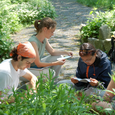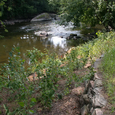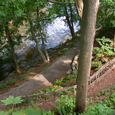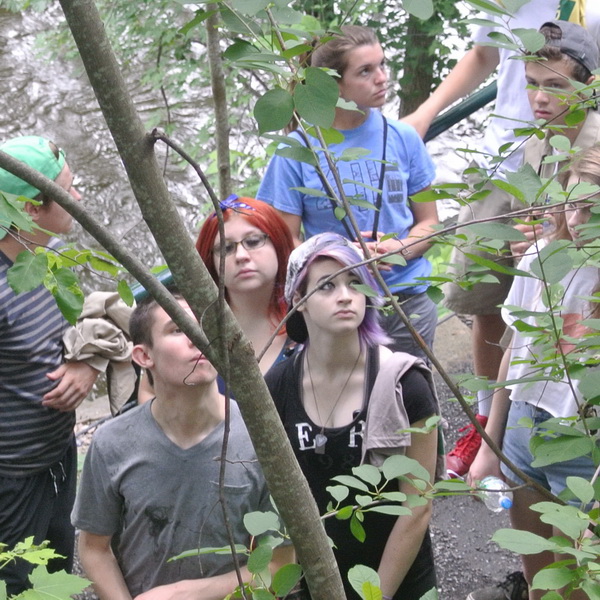River Walk is unlike other riparian ecosystems in many ways. In order to convey a complete and accurate picture of its interrelationships and energy cycling, we need to look beyond text-book ecological processes and include the human element. Educators, historical figures, removers of debris and invasive plants, installers of riverbank reinforcement, cultivators of native plants, and many others are all vital to River Walk's energy flow. River Walk exists thanks to human feats of native planting, bioengineering, clean-up, persistence, and vision.
At River Walk, pollination extends beyond insects and birds. River Walk was founded by the seeding of ideas across time – by the words of W.E.B. Du Bois in 1930 landing with River Walk founder Rachel Fletcher, some 60 years later. As River Walk’s students, interns, and fleets of volunteers disperse into new fields and jobs, their ecological know-how travels with them and seeds ideas in other communities. Think of milkweed seeds riding the wind currents.
Cross-pollination at River Walk includes a relationship to human innovation and industrial history. One section of trail celebrates William Stanley, a founding father of the modern electrical age, whose experimental laboratory stood across the River. Stanley's innovations, powered by the flow of the Housatonic, advanced electricity as we know it. However, the PCBs that would come to insulate his alternating-current transformers contaminated the River. River Walk incorporates this ironic confluence, so that visitors are reminded of our impact on the planet and the need for stewardship. Further, River Walk provides a laboratory for current issues of sustainability, where we can measure the success of eradicating invasive plants without chemicals, or monitor the recovery of depleted soils, among many other opportunities.
River Walk expands our definitions of species richness and diversity to incorporate the human element and the span of generations. A memorial to W.E.B. Du Bois, engineer of the civil rights movement on a national and global scale, rests adjacent to a memorial to Monica Schultz Fadding, local architect of the planting and propagation schemes that brought the riverbank back to life.
River Walk pushes the concept of habitat connectivity into a new realm, uniting ecological concepts with urban planning know-how. Great Barrington’s Main Street is roughly parallel to River Walk, and a mere 800 feet away at the farthest point. In minutes, we can walk from sidewalks and storefronts to the solace of a river and its living bank. We can cycle back through downtown, and do it over again, like minerals traveling through the biota of an ecosystem, our souls nourished by the flow.
As you course through, stop to take in a layer or two, the buzz of insects on native plants, the settling turbulence in the rain garden, the mindset of inventors and visionaries past, or the comfort of a turtle nest buried in the soft bank.











